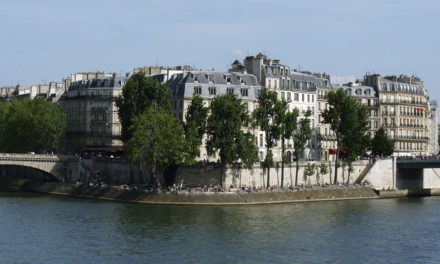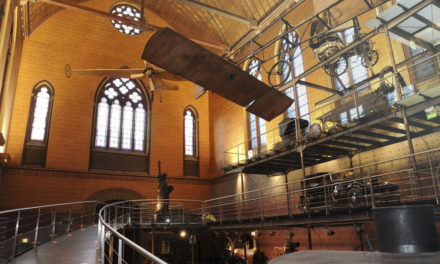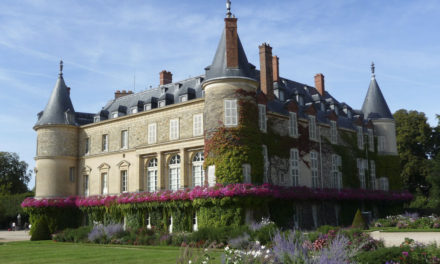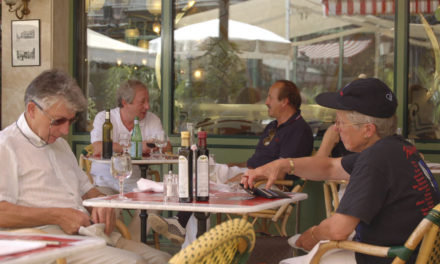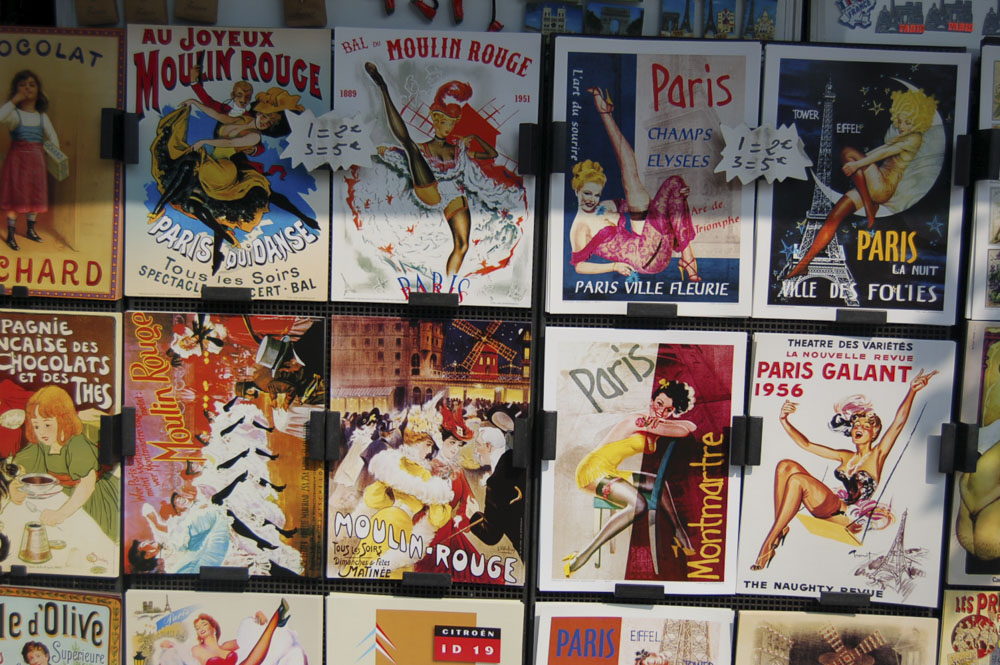
Posters for sale on the banks of the Seine – Copyright Informationfrance.
Paris became a royal seat as early as 888 A.D. when Robert the Strong led the resistance to Norsemen sailing up the Seine who wrecked the original abbey of St-Germain-des-Prés. St-Germain- des-Prés with its beautiful church has, however, survived with a colourful area of literary cafés, boutiques, restaurants, shops, antique dealers and the night life of its side streets. If you want to see Paris, go to the Sacré Coeur at the summit of the artists’ village of Montmartre and observe a panoramic view of the city spread beneath you. Degas, Monet, Picasso, and Dali were drawn to this spot. The city is divided into 20 ‘arrondissements’ which spiral out from the hub to the ‘Péripherique’ arterial road which rings the city. Eminently walkable, the city can also be explored by the excellent Metro system, by bus or by boat. With landmarks of outstanding beauty, every gilded piece glistening in the sunshine, this is as well as being one of the most romantic cities of the world, one of the most beautiful.
Arrondissements in Paris
1st Arrondissement
2nd Arrondissement
3rd Arrondissement
4th Arrondissement
5th Arrondissement
6th Arrondissement
7th Arrondissement
8th Arrondissement
9th Arrondissement
10th Arrondissement
11th Arrondissement
12th Arrondisement
13th Arrondissement
14th Arrondissement
15th Arrondissement
16th Arrondissement
17th Arrondissement
18th Arrondissement
19th Arrondissement
20th Arrondissement
Book a Hotel in Paris
Opéra-Garnier
Paris is blessed with a total of 100 theatres and other venues devoted to the performing arts, many of them situated near the Madeleine and ranging from such famous names as the Opéra-Garnier, Opéra-Bastille and Comédie Francaise to the Moulin Rouge, Paradis Latin and Folies Bergère. There are 87 museums and over 100 art galleries. In the 5th and 6th arrondissements on the Left Bank is the Quartier Latin, named because Latin was the language of instruction in the venerable institutions there right up to the Revolution. The River Seine divides the city and is crossed by a plethora of bridges including the Pont Neuf, one of the oldest, giving access to the Cathedral of Notre Dame, on the Ile-de-la-Cité, the cradle of civilisation in Paris. This is one of the greatest achievements in the world of gothic architecture. Commenced in 1163 and completed in around 1345, it can accommodate over 6000 worshippers. Once two islands, the Ile- aux-Vaches ( island of cows) and the Ile-Notre-Dame, the islands were united in the 17th century to form the Ile-St-Louis and much of the architecture of this period remains to be admired to this day.
Champs-Elysées
Shopping in the capital of chic is concentrated in a few districts. The Champs-Elysées has fashion boutiques, cosmetic shops and showrooms for luxury cars. The Rue du Faubourg-St-Honoré is the heart of haut couture and ready-to-wear clothing as well as furs, leather goods and perfume. For some of the best known names in jewellery, the Place Vendôme is the place to go with Cartier, Boucheron, Chaumet and Van Cleef & Arpels opposite the Ritz Hotel and Ministry of Justice. There are of course large department stores – if you want to find everything under one roof, such as Galleries Lafayette and Magasins du Printemps in the Boulevard Haussman. Gastronomically, Paris combines the best that France has to offer and is where the countless specialities of all the provinces are to be experienced and sampled. Fauchon is the Fortnums of Paris and one of many specialist shops selling divine food and groceries. At the other end of the spectrum there are myriad markets and smatterings of smaller shops, each paying the same attention to detail and to quality of produce for which France is so justly famed. At weekends, besides Parisian families heading for lunch in brasseries and restaurants across the city, scores of rollerbladers can be seen zooming round the deserted streets – an elegant and silent way to see the city sights.
The Louvre
The attractions for which Paris is known worldwide are legion. From the Louvre dating from around 1200, built originally as a fortress but turned into a public museum in 1793 with its Mona Lisa, Venus de Milo and Winged Victory, to the Place des Vosges in the Marais district which became a residential area in 1605 due to King Henri IV. The Tuileries are delightful, frequented by the ‘beau monde’ and originally designed in the 16th century by Catherine de Medici but transformed in the 17th into the classical formal French style. Originally the Champs Elysées was intended to be a triumphal route from here long before Napoléon planned his ‘Arc de Triomphe’ to celebrate his victories, an idea which fell somewhat flat when the archway was unfinished when he was defeated at the Battle of Waterloo. Nowadays it is a place to dice with death if you are attempting to circumnavigate it by car and where the tomb of the unknown warrior from the first world war is marked by an eternal flame. The Place de la Concorde, now reverberates to the rattle of traffic across its cobble stones, the largest square in Europe, whilst once the predominant sound was of the clicking knitting needles and swift metallic swish of the guillotine’s downward path as some 1,343 heads rolled at the height of the Revolution. To the south of the river, the golden dome of Les Invalides gleams, built by Louis 14th for wounded soldiers. Napoléon’s sarcophagus rests in the Eglise du Dôme and Maréchal Foch is also buried there. The Eiffel tower, named after its designer, Gustave Eiffel, built for the World Fair of 1889 to commemorate the anniversary of the Revolution, stands 1050 feet high and was the world’s tallest building until 1930. Now illuminated from June of 2003 from the first 10 minutes of each hour from sunset to 2 a.m in the summer and 1 a.m. in the winter for the next decade, it is probably the icon which most symbolises Paris. The spectacular Musée d’Orsay, once a railway station, exhibits a host of artistic treasures including famous Impressionist and post Impressionist paintings. Finally, the Bois de Boulogne is an astonishing 860 hectare park on the way out of the city, known as the “lungs of Paris”.


